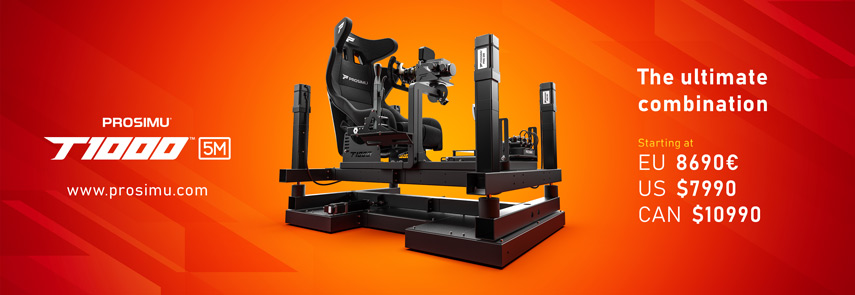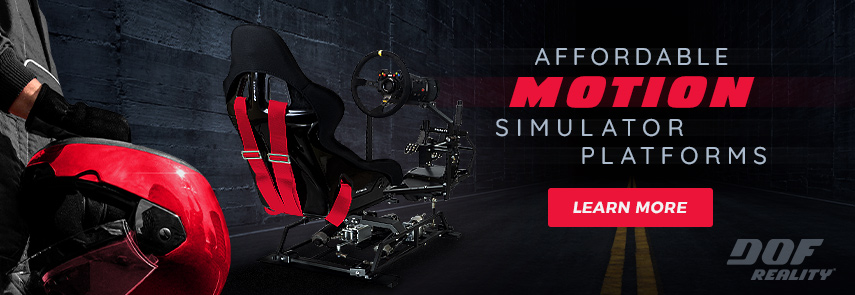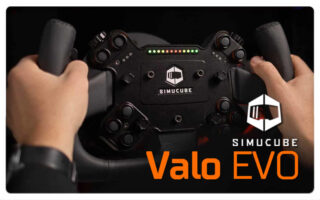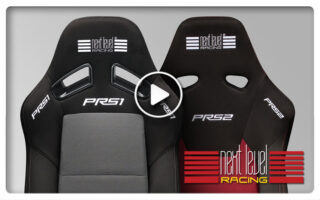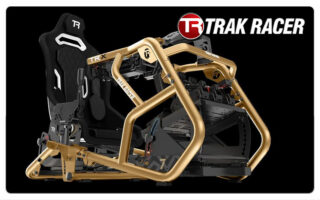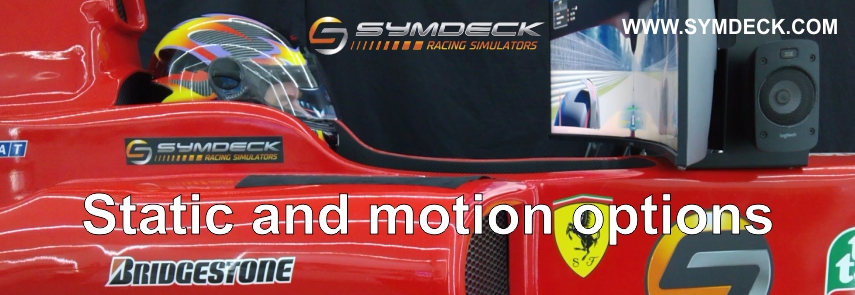| The Pro-Race is a powerful but easy to use a display that can be mounted on a wheel, dashboard or button box. It is also a USB joystick controller but this functionality can be disabled if needed.
It retails for 75 GBP ( $120 – €93 )
The Demo video is supplied by Sim Racing Hardware [SRH] who implemented the Pro-Race component in on of their high-quality wheel plates.
[AFG_gallery id=’219′]
https://simracinghardware.com
The Pro-Race controller includes:
- – 11 LEDs for shift lights.
- – 12 LEDs that can be used to display the state of the flags, traction control, speed limiter, level of fuel, water temperature, or something else. Almost any data available from the simulator can be associated with these LEDs.
- – 0.56” gear indicator.
- – a 3-digits display for speed, current position, current lap, or fuel level.
- – a 6-digit display for lap time, rpm, speed, or other data available.
- – the joystick controller has 20 digital inputs that can be connected to push buttons, toggle buttons, or rotary encoders.
- – 4 way POV hat switch.
Configuring the Pro-Race controller
 
Displays and LEDs brightness
The brightness of the gear indicator display, 3 digits, and 6 digits displays and LEDs can be adjusted independently. In particular, each LED color has a separate brightness setting.
Displays data
The Data configuration screen is used to configure what data is associated with the 3 digits and 6 digit displays.
Lists 1 and 2 in the picture above associate the data to each display. More data items can be associated with each display. Buttons marked with 3 and 4 in the picture above are used to change backward and forward what data is displayed.
If the checkbox indicated with 5 is enabled, when the displayed data item is changed a small description of the new data is displayed, for few seconds.
Shift lights
This section is used to configure the shift lights, the 11 LEDs at the top of the display.
Each LED can be configured to turn ON and optionally to blink at 3 different speeds based on the value of RPM.
To configure a LED, click it with the mouse and the screen above will appear. Here it will be possible to specify at which value of RPM the LED will turn ON and start blinking slowly, at normal speed, or fast.
If the checkbox marked with 1 (two pictures above) is enabled, the shift lights will display an alternate pattern when the speed limiter is switched ON (only works with simulators that report the state of speed limiter).
The button marked with 2 (three pictures above) opens the Quick Config wizard (picture above), which allows you to quickly configure all the shift lights in one go. All you have to do is to set the value of RPM at which the first and last shift light will turn ON and the software will calculate the appropriate values for the intermediate LEDs.
Other LEDs
The other LEDs can be configured in the screen above. Like the shift lights, each LED can be configured by clicking on it and the corresponding configuration screen will open. The configuration screen is very similar to the one for shift lights and the only difference is that more data can be associated to these LEDs, not only RPM but also fuel level, water temperature, flags, and so on.
Buttons
The last section is dedicated to the configuration of rotary encoders and toggle switches.
– Rotary Encoders are special devices with 3 pins. Each rotary encoder replaces 2 buttons: when the encoder is rotated clockwise a press of one of the buttons is simulated. When the rotary encoder is rotated anti-clockwise, a press of the other button is simulated.
– Toggle switches are two position switches (ON and OFF). When a digital input is configured to work with toggle switches, a button press is simulated when the toggle switch is moved to the ON position and another button pressed is simulated when the toggle switches is moved to the OFF position.
– The Polling Interval settings determine how often the inputs of the controllers are read. The default value is 20 ms, which is usually fine if you are only using push buttons. The reason why you don’t want to read the state of the buttons too quickly is that when a button is pushed it normally bounces for some milliseconds and if these bounces were read by the controller more button pushes would be reported. Instead, reading the state of the buttons every 20ms guarantees that the bouncing has stopped. If you are using rotary encoders, 20ms between one reading and the following could be too long if you rotate the encoder very quickly. In that case the polling interval can be reduced to 15ms, 10ms or 5ms.
Connecting buttons and rotary encoders
Connecting push buttons
– Buttons are connected to a 6×4 matrix, like in the picture above.
– Each button has one contact connected to a COLUMN and the other contact connected to a ROW.
– Diodes are NOT required if you don’t connect rotary encoders or toggle switches and if you don’t expect to press 3 or more buttons at the same time. (if you press 3 or more buttons with no diodes, button presses are not decoded correctly is some cases).
Connecting rotary encoders
Rotary encoders are connected to the Pro-Race display similar to the picture above:
– The central pin of the rotary encoder is connected to one of the ROW pins. In the picture above the central pins are connected to ROW 1.
– The other two pins of the rotary encoder connect to COLUMNS 1 and 2, or to COLUMNS 3 and 4 or to COLUMNS 5 and 6.
– Diodes are often necessary when using rotary encoders but now always. See below when diodes are required.
– In the picture above the first rotary encoder replaces Buttons 1 & 2. The second rotary replaces Buttons 3 & 4 and the third one replaces Buttons 5 & 6.
When are diodes required?
Diodes are NOT required in any of the following cases:
– Only pushbuttons are used (no rotary encoders or toggle switches).
– If rotary encoders and/or toggle switches are being used, they are connected to only ONE ROW of the input matrix. If you have connected push buttons as well, pushbuttons, rotary encoders, and toggle switches are connected to the same ROW of inputs. Only ONE row is used.
In all the other cases, diodes must be connected between the pins of the rotary encoders/toggle switches/push buttons and the COLUMN pins of the Pro-Race display. |
![]()

 Bsimracing Sim Racing Resources and News for the racing enthousiast.
Bsimracing Sim Racing Resources and News for the racing enthousiast.



